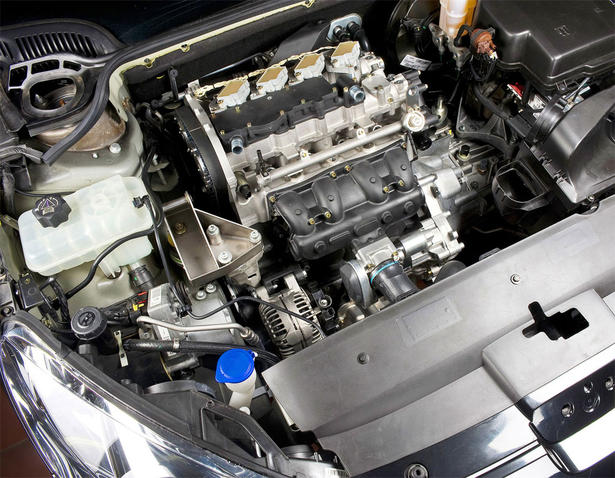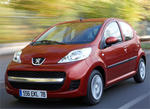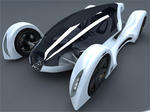
Peugeot has announced that it has developed a new 1.5L engine that develops 220 hp and 420 Nm of torque. The Peugeot 1.5L MCE 5 VCRi engine delivers as much power as a 3.0 liter V6 and the same amount of torque as you would get from a V8. The Peugeot 1.5L MCE 5 VCRi engine will be premiered at the Geneva Motor Show in March where it will be showcased in a Peugeot 407. The Peugeot 1.5L MCE 5 VCRi engine offers a fuel economy of 6.7 liters per 100 km and a 158 g/km CO2 emissions level.
Later this year the company says it will fit the new Peugeot 1.5L MCE 5 VCRi engine with GDI (gasoline direct injection) which will boost the power figure to 270 hp and the torque to 460 Nm while the fuel consumption will drop to 6.0 L / 100 km.
Peugeot Press Release:
The 79th International Motor Show in Geneva is kicking off a sluggish year for the automotive industry. Following on the heels of high oil prices, limited access to credit and the consequences of the financial crisis on purchasing power are today penalizing the automotive industry. The development of new gasoline engines will be essential to revive the industry since these engines will continue to represent over 80% of the market for the next 20 to 30 years.
These new engines must be able to boost the market and meet new regulations. Their production costs must remain affordable. In line with these objectives, MCE-5 technology already has a 12 year lead on what should be a fundamental stage in the development of IC engines: an "intelligent" variable compression ratio. VCRi heralds the renewal of car engine technology.
The first VCRi vehicle: a leap forward for automobiles
The Peugeot 407 type demonstration vehicle presented on the MCE-5 DEVELOPMENT stand
(No 3000 in the Green Pavilion) is powered by a 1.5L MCE-5 VCRi engine that develops 220 hp, equal to that of a 3.0L V6 engine, and 420 Nm of torque as of 1500 rpm, comparable to that of a V8 gasoline engine. These results are achieved with a fuel consumption of 6.7 L / 100 km on the NEDC (158 g of CO2/km). This high performance 1.5L demonstration can of course be applied to lower engine capacities. These results are only intermediary ones obtained on an engine in development that is not equipped with GDI (gasoline direct injection) or the optimized combustion chambers expected in late 2009.
A 2010 version of MCE-5 VCRi engine will be equipped with GDI, optimized combustion chambers as well as the advanced management of engine temperature, of the cylinder head, pistons and exhaust manifold. The power and torque will respectively be ramped up to 270 hp and 460 Nm, while average consumption on the NDEC will drop under the 6.0 L / 100 km mark (less than 140 g of CO2/km). With this type of engine, reaching the target of 120 g of CO2/km seems realistic by 2012-2013 for high-performance vehicles, with a strong reduction in fuel consumption for the whole vehicle range.
A clear strategy from prototype to mass production
Many prototypes never reach mass production for
functional, economic or strategic reasons. As opposed to many other technologies that have been explored, the MCE-5 engine benefited as of the start of its development in 1997 from an approach resolutely focused on mass production. In 2009, twelve companies including major European Tier 1 automotive industry suppliers combined their talents to propose to carmakers a program intended to develop and manufacture the MCE-5 VCRi engine in the coming 6 to 8 years.
This proposal makes even more sense in the current economic, energy and environmental context, by addressing the main factor that will condition the automotive industry for the next 20 to 30 years: gasoline engine efficiency.












